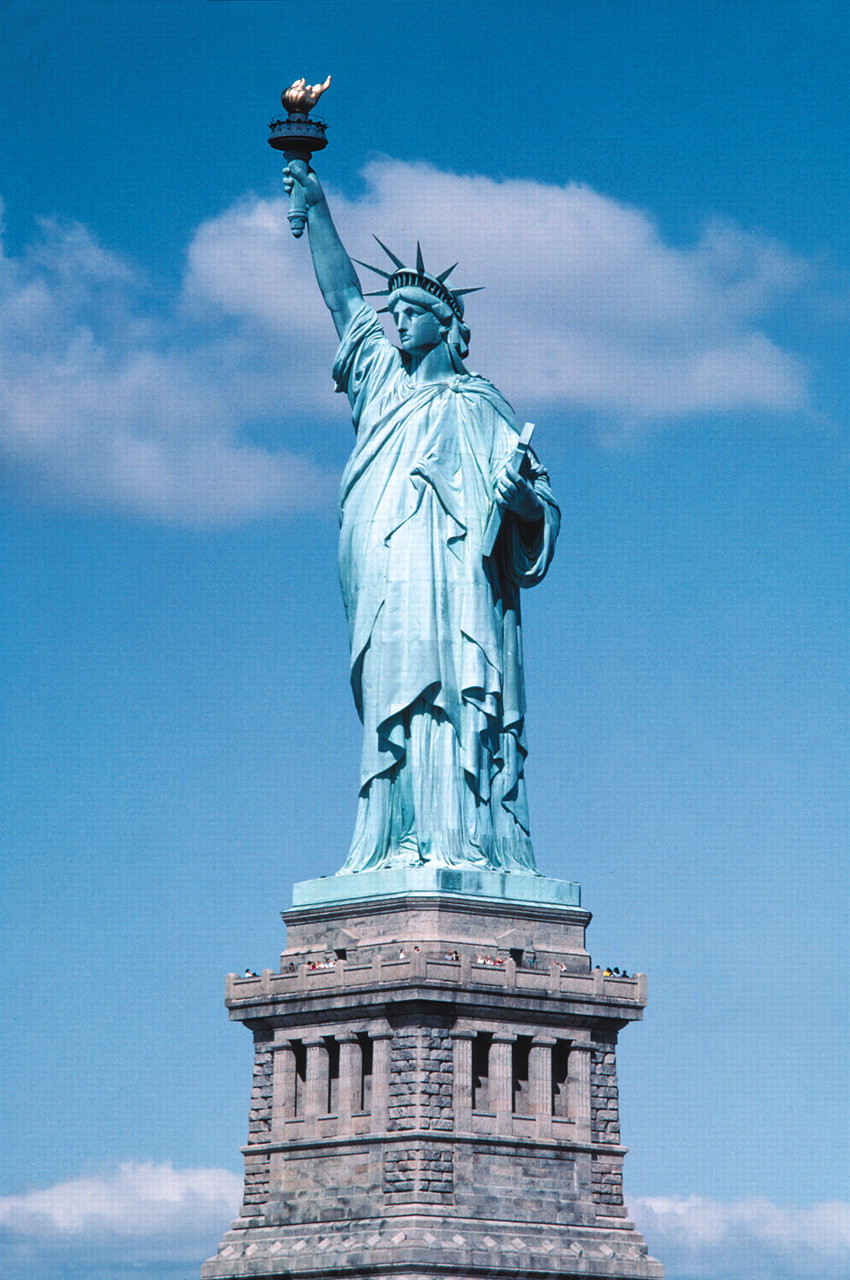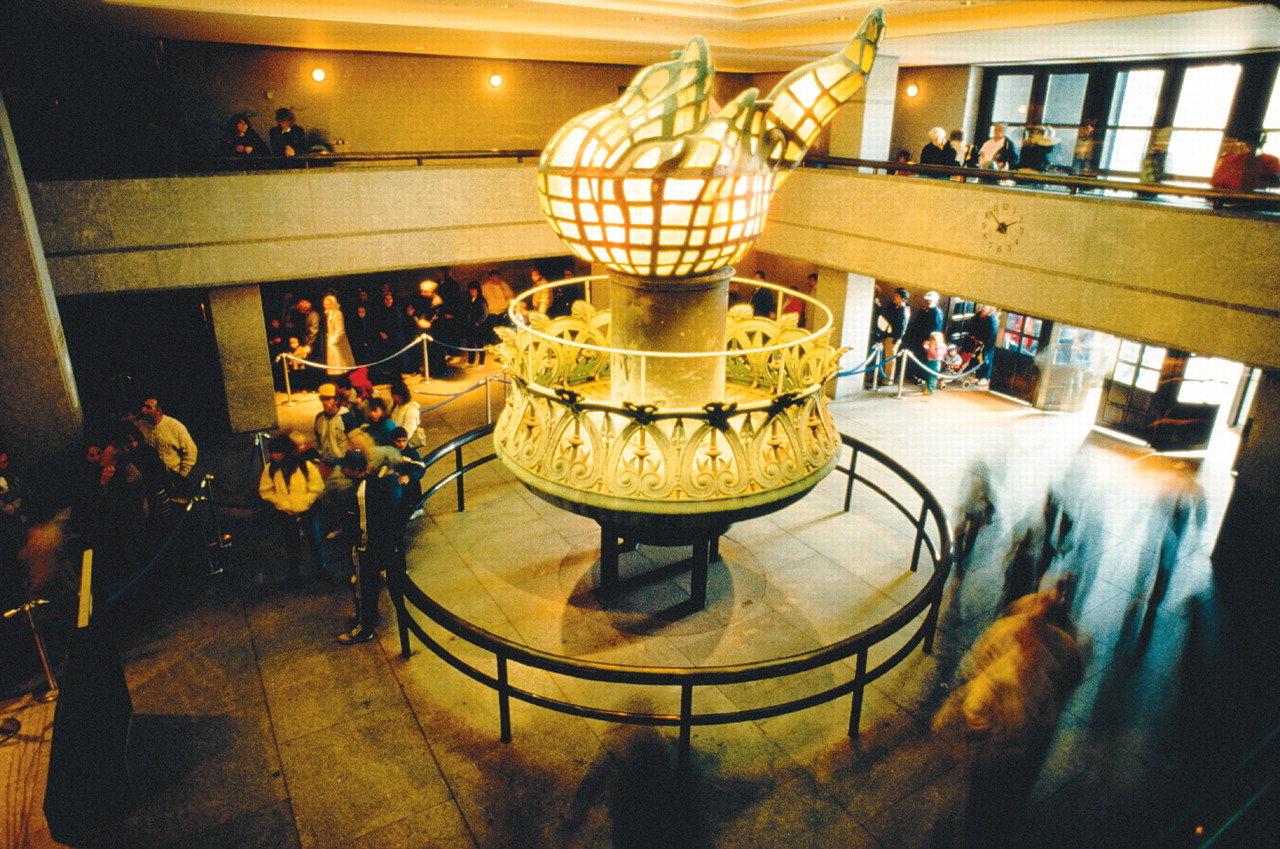The immigrant experience, it has been said, is not just a feature of American history—it
is American history. And it is a central component in the history of New York City, where 12 million immigrants passed through Ellis Island between 1892 and 1954.
Declared part of the Statue of Liberty National Monument in 1965, Ellis Island underwent a $162 million renovation in the 1980s and reopened to the public as a museum in 1990.
Today, the Ellis Island Immigration Museum is dedicated to commemorating the immigrants’ stories and their pursuit of a new home and the American Dream. The museum contains 30 galleries and exhibits filled with artifacts, historic photos, posters, maps, oral histories, and ethnic music.
At its most active, thousands of new Americans disembarked at the island every day from trans-Atlantic steamships. Then, they made their way slowly in long lines up a steep flight of stairs to the Registry Room, where their names were transferred from the ship manifests to inspectors waiting to examine them for diseases, such as smallpox or measles, or disabilities. Not infrequently, an inspector would quite spontaneously render an unpronounceable name into something recognizable—a first step in gaining a new identity as an American. More than 100 million Americans today can trace their ancestry to someone who arrived at Ellis Island.
In time, the utility of the island dwindled when restrictions were placed on immigration in the 1920s, and Ellis Island closed its doors in 1954. In the years after, the buildings suffered tremendous damage in the often severe weather of New York Harbor.
“Concern about this vital part of America’s immigrant history led to the inclusion of Ellis Island as part of the Statue of Liberty National Monument in 1965,” according to the museum’s Web site at www.ellisisland.com.
“Private citizens mounted a campaign to preserve the island, and one of the most ambitious restoration projects in American history returned Ellis Island’s Main Building to its former grandeur in September 1990.”
Highlights of the museum include the Baggage Room, where immigrants first set foot into the Main Building on Ellis Island, now restored with displays of period baggage. The Registry Room, once the focal point of the immigrants’ processing, is where newcomers underwent questioning and were either given permission to land or denied entry into the country. The American Immigrant Wall of Honor has 420,000 entries honoring arrivals, the largest wall of names in the world.
These are among other features:
• “Island of Hope, Island of Tears” is a 30-minute film produced by Oscar-winning filmmaker Charles Guggenheim in which immigrants tell their stories of pulling up roots and coming to America. Free tickets can be obtained at the Ellis Island information desk; they are available on a first-come, first-served basis.
• “Voices from the Past” are one-person shows connected with Ellis Island history. Some shows include “Irving Berlin’s America,” “An American Wake,” “Songs and Stories of Irish Immigration,” “Bela Lugosi and the Legend of Dracula,” “The Titanic—A Survivor’s Story,” and “The Journey of Annie Moore”—the story of the first immigrant to be processed at Ellis Island. Tickets cost $2 each, and the shows last approximately 20 minutes.
• “The Ellis Island Oral History Project” has been conducting interviews since 1973. More than 1,500 interviews have been collected containing firsthand accounts of those who were processed at Ellis Island. There are also a number of interviews with doctors, nurses, clerks, and immigration officials who recall the operation of the Ellis Island immigration facility. The Oral History Library is open to the general public and contains a computer system with 20 listening stations. Also located in the museum is the American Family Immigration History Center, which provides access to ships’ passenger manifest records of the 22 million people who entered America through the Port of New York and Ellis Island (see box).
To visit the Statue of Liberty and Ellis Island Immigration Museum, visitors must take the Statue of Liberty and Ellis Island Ferry from Battery Park in lower Manhattan. ▪



